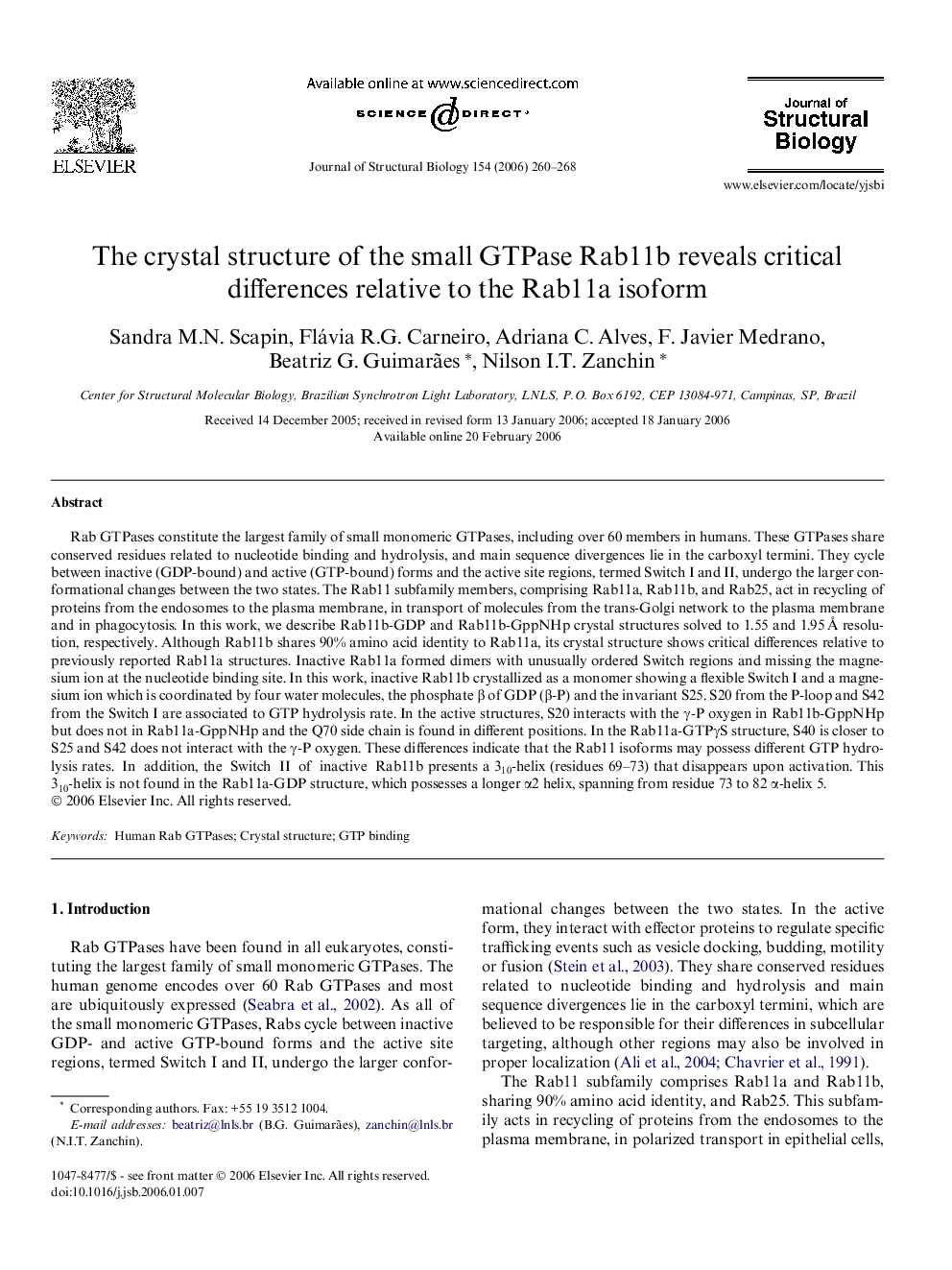| Article ID | Journal | Published Year | Pages | File Type |
|---|---|---|---|---|
| 2829666 | Journal of Structural Biology | 2006 | 9 Pages |
Rab GTPases constitute the largest family of small monomeric GTPases, including over 60 members in humans. These GTPases share conserved residues related to nucleotide binding and hydrolysis, and main sequence divergences lie in the carboxyl termini. They cycle between inactive (GDP-bound) and active (GTP-bound) forms and the active site regions, termed Switch I and II, undergo the larger conformational changes between the two states. The Rab11 subfamily members, comprising Rab11a, Rab11b, and Rab25, act in recycling of proteins from the endosomes to the plasma membrane, in transport of molecules from the trans-Golgi network to the plasma membrane and in phagocytosis. In this work, we describe Rab11b-GDP and Rab11b-GppNHp crystal structures solved to 1.55 and 1.95 Å resolution, respectively. Although Rab11b shares 90% amino acid identity to Rab11a, its crystal structure shows critical differences relative to previously reported Rab11a structures. Inactive Rab11a formed dimers with unusually ordered Switch regions and missing the magnesium ion at the nucleotide binding site. In this work, inactive Rab11b crystallized as a monomer showing a flexible Switch I and a magnesium ion which is coordinated by four water molecules, the phosphate β of GDP (β-P) and the invariant S25. S20 from the P-loop and S42 from the Switch I are associated to GTP hydrolysis rate. In the active structures, S20 interacts with the γ-P oxygen in Rab11b-GppNHp but does not in Rab11a-GppNHp and the Q70 side chain is found in different positions. In the Rab11a-GTPγS structure, S40 is closer to S25 and S42 does not interact with the γ-P oxygen. These differences indicate that the Rab11 isoforms may possess different GTP hydrolysis rates. In addition, the Switch II of inactive Rab11b presents a 310-helix (residues 69–73) that disappears upon activation. This 310-helix is not found in the Rab11a-GDP structure, which possesses a longer α2 helix, spanning from residue 73 to 82 α-helix 5.
